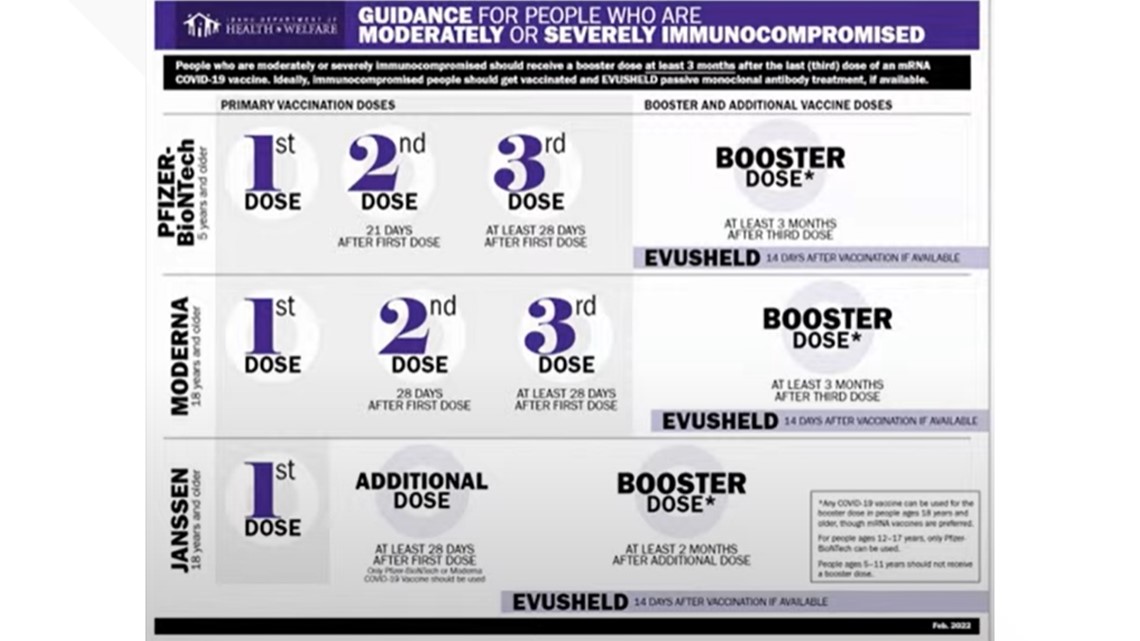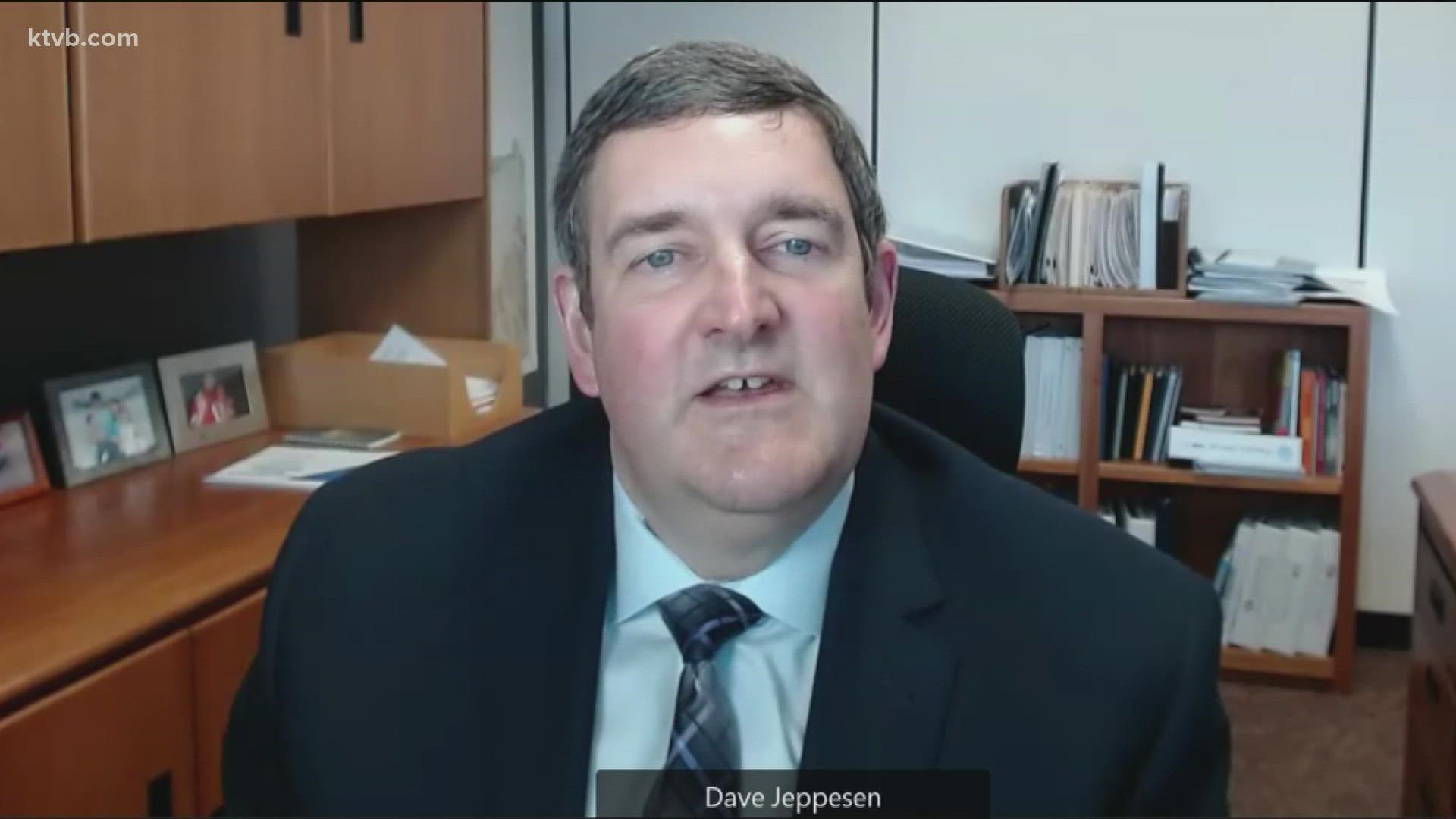BOISE, Idaho — The Idaho Department of Health and Welfare (IDHW) held its weekly media briefing regarding COVID-19 in the Gem State Tuesday at 2:30 p.m.
Officials said the data is trending down in regards to daily cases, but are still very high when compared to reported cases at the start of the pandemic.
Nearly two years into the COVID-19 pandemic, Idaho saw new daily case numbers surge at the end of January to the highest they have been since the state's first case was confirmed.
According to IDHW, PCR testing positivity rate for Idaho was a record-high 32.0% for the week of Jan. 23 - Jan. 29. For the week of Jan. 30 - Feb. 5, the testing positivity rate fell to 25.1%.
However, IDHW director Dave Jeppesen confirmed Tuesday that crisis standards of care has been deactivated in three Idaho health districts. Crisis standards of care is no longer active anywhere in Idaho, but due to a high testing positivity rate still in place, Jeppesen said "we are not out of the woods yet."
"I'm pleased to share that today, crisis standards of care have been deactivated for Southwest District Health, Central District Health and Southcentral District Health," Jeppesen said. "This means that crisis standards of care are no longer active anywhere in Idaho … The committee recommended exiting crisis standards of care due to the combination of lower numbers of those being hospitalized for COVID-19, along with a stabilization of staffing and blood supplies. It is important to note that health systems across the state are still very stretched, with many using contingency operations, which is one step below crisis operations … While new COVID cases are declining, I want to emphasize that the number of new COVID cases remains very high and while we have seen a decline for two weeks in the testing positivity rate, it is at 25%, which is higher than the delta surge late last year and over five times higher than the target of under 5%. We are not out of the woods yet."
On Monday, Feb. 14, there were 1,492 reported new cases and 25 new deaths in Idaho. Since the start of the pandemic, Idaho has reported 4,577 COVID-related deaths and 404,629 total confirmed and probable cases.
On Tuesday, Idaho health officials stressed the importance of getting vaccinated and receiving booster shots to combat the Omicron variant. State epidemiologist Dr. Christine Hahn shared a chart during the COVID-19 media briefing that explained guidance for people who are moderately or severely immunocompromised.
Dr. Hahn also discussed confusion around vaccinations and additional shots for the Janssen vaccine, stating "initially, it was considered a one-dose vaccine, and that was great news, but it is now recommended that people that got Janssen get an additional dose"


"Even though things are improving, the number of COVID-19 cases statewide and the testing percent positivity is still very high," said DHW Director Dave Jeppesen. "Please continue to take the recommended precautions and get vaccinated and boosted, wear a mask in public places, and stay home if you feel sick so those numbers keep trending in the right direction."
Dr. Christopher Ball, chief of the Idaho Bureau of Laboratories, also provided an update Tuesday on Idaho's testing infrastructure and tracking different COVID-19 variants as they enter the Gem State.
Dr. Ball discussed the state's progress with wastewater testing and how the University of Idaho, Boise State University, Idaho State University and Lewis-Clark State College is getting involved with the testing.
"This sampling typically occurs one to three times per week," Dr. Ball said. "The testing is done through PCR but the testing is a little bit different than what we do for patient diagnosis. This is what we call quantitative PCR, which means rather than giving a positive or negative result, a quantitative PCR result will show the number of copies of SARS-Cov-2 genes in the sample. So, over time, when we look at these copy number trends, they can give us an estimate on the abundance of SARS-CoV-2 genes in each sewer shed, or coming out of each facility … In general, there seems to be a positive correlation between the SARS cv 2 copy number and case rates."
Dr. Ball said IDHW has sub grants with the four institutions in Idaho and in conjunction with the Idaho Bureau of Laborites, the universities have established five regional laboratories to expand the number of wastewater testing in Idaho. The University of Idaho has just submitted information for approval to the CDC's National Wastewater Surveillance System.
Dr. Ball said he hopes the increase in wastewater testing will give early warnings to monitor COVID-19 at a community-level, rather than an individual-level.
During the briefing, Jeppesen gave a reminder that the Idaho Office of Emergency Management and DHW are giving free KN95 masks to the public.
"Over 400,000 KN95 masks have gone to 40 community partners in both rural and urban areas in the state who have made them available to community members," Jeppesen said.
Dr. Hahn also said she understands the Boise School District's decision Monday to move to an optional mask mandate and called it "wise" for BSD to wait until after spring break to implement the new rule, in the case of another surge of cases in Idaho.
At KTVB, we’re focusing our news coverage on the facts and not the fear around the virus. To see our full coverage, visit our coronavirus section, here: www.ktvb.com/coronavirus.
Facts not fear: More on coronavirus
See our latest updates in our YouTube playlist:

